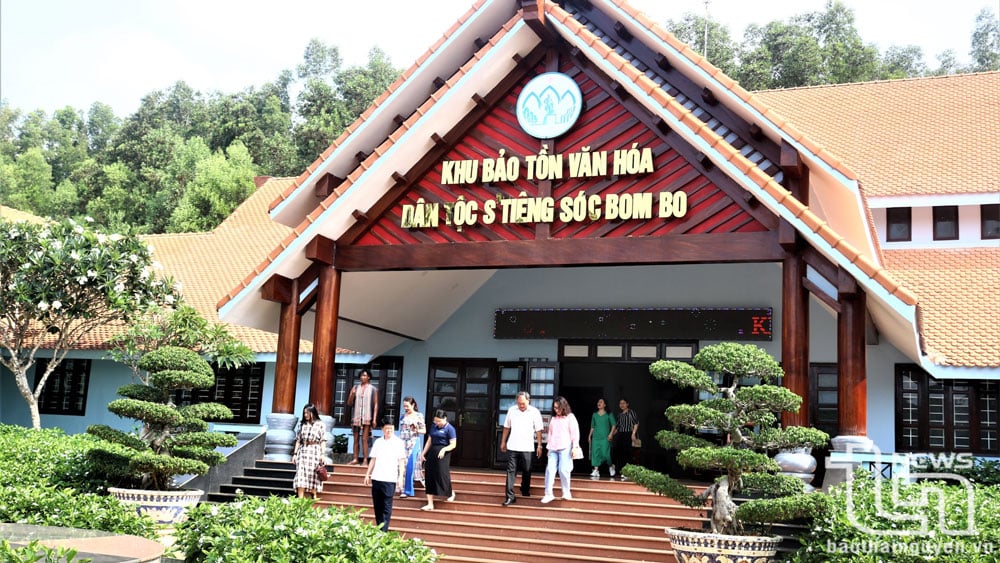 |
| The exhibition displays models depicting the life and activities of the S'tieng people of Bom Bo village during the resistance against the American imperialist invasion. |
During the resistance against the American imperialist invasion, the fire of the bamboo torch contributed to the victory in the Dong Xoai - Phuoc Long campaign. With the country unified, modernized, and integrated into the world , the S'tieng people and other ethnic groups in the Central Highlands have become closer in the light of the bamboo torch, contributing their strength to confidently enter the new era of development alongside the rest of the nation.
Over 50 years ago, soldiers "cut through the Truong Son Mountains" barefoot on their way south. Today, we, the younger generation, fly from North to South, then travel by air-conditioned car to reach these war-torn regions. Soc Bom Bo is one of the places we chose. Knowing it was our first time visiting Soc Bom Bo, Mr. Cao Minh Truc, Deputy Director and Deputy Editor-in-Chief of Binh Phuoc Radio, Television and Newspaper, proudly said: "Do you know, for three days and nights, nearly 100 S'tieng people and soldiers worked tirelessly to pound over 5 tons of rice by hand to support our troops in the Dong Xoai - Phuoc Long battle?"
The journey from Dong Xoai City to Bom Bo village seemed shorter. The city streets receded behind us, revealing orchards laden with flowers and fruits, along with cashew and pepper plantations and endless stretches of rubber forests. Suddenly, the car slowed down, and everyone gasped in excitement: Right in front of the car was a large archway built in the architectural style of the houses of the Central Highlands people… And a S'tieng Ethnic Culture Conservation Area – Bom Bo village – was built on a high, dry piece of land, surrounded by fragrant white jasmine blossoms. The story told by the conservation area's guide, Ms. Hoang Thi Thu Huong, was as vivid as a film recreating the working and fighting life of the S'tieng people during the years when enemy bombs ravaged their homeland.
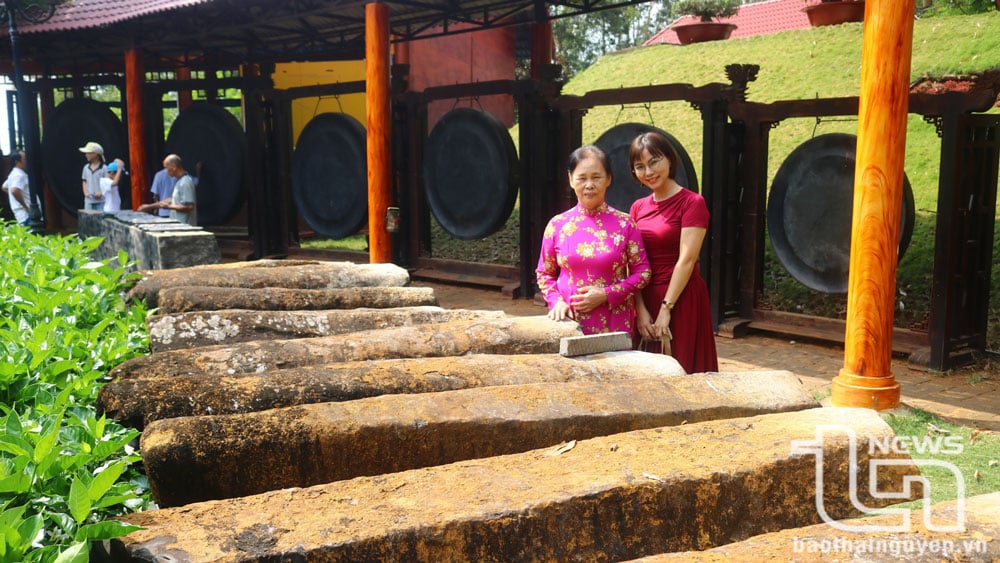 |
| The 20-ton stone xylophone set has been recognized by the Vietnam Record Organization as the largest stone xylophone set in Vietnam. |
Yes! The war is over, half a century has passed since the country was reunified, but coming here to hear the resonant sounds of gongs and drums, the melodious sounds of the bamboo flute, the resonant sounds of the gourd-shaped mouth organ, the sounds of the ding jut string instrument, and the stone xylophone echoing the heartfelt sentiments of the S'tieng people during the years when the people of the Central Highlands, united under the Party's leadership, fought the enemy and pursued their aspiration for national reunification… The old people and scenes have been etched into history by the light of the bamboo torch. Ms. Thu Huong said: In Bom Bo, there are still the elders Dieu Len and Dieu M'Rieng who are living witnesses.
At 80 years old, old man Dieu Len is still as strong as a large tree in the bamboo forest. He is considered a living history book of the S'tieng people. His memory is full of stories about the heroic times of the village. During the years when the Bom Bo people used torches to pound rice in bamboo to feed the troops, even though he was not as tall as the pestle, he had already joined the guerrilla team, acting as a messenger delivering letters to cadres in the base. With his sincere and simple words: "Like many of my fellow villagers, I don't know how to read or write, but I know the revolutionary soldiers are good, so we follow them together."
At nearly 20 years old, he joined the Army, directly participating in over 40 battles with his unit, consistently achieving meritorious service, and receiving numerous awards from his superiors such as "Hero of Eliminating Evil and Breaking the Enemy's Censorship" and "Hero of Eliminating the Americans and the Puppet Regime." Proud of his achievements, he lives humbly, setting a shining example for his children and grandchildren to learn from and strive for.
Going back to the early 1960s, the US and its puppet regime continuously raided and forced people into strategic hamlets to carry out their plot to destroy the revolution and sever the people's ties with the revolution. Looking at the artifacts displayed in the conservation area, including long wooden mortars, tools, temporary houses made of bamboo and leaves, Ms. Huong was moved: In that context, the people of Bom Bo abandoned their homes and possessions and followed each other into the forest to join the revolution.
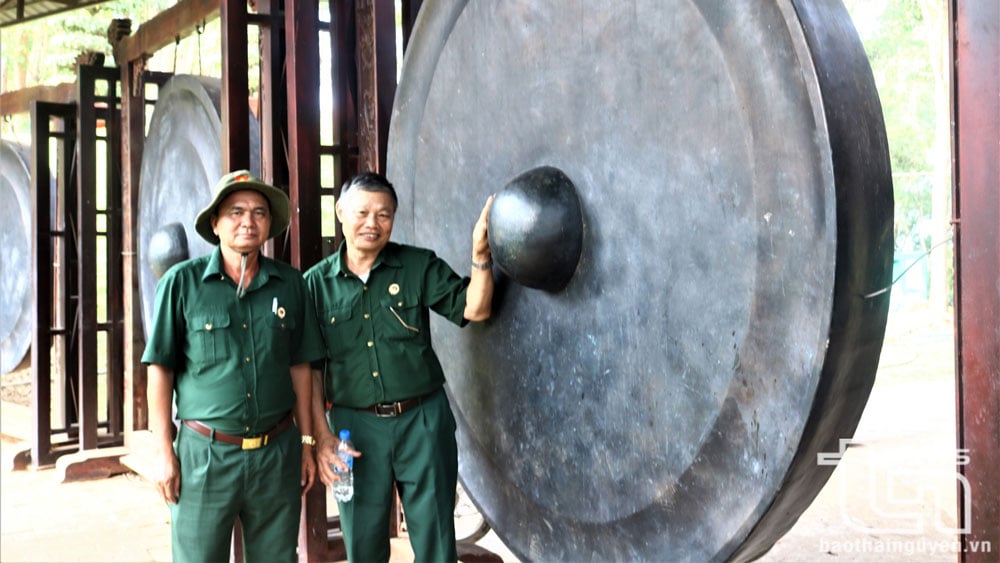 |
| The set of gongs and cymbals made of copper and tin for performances has been recognized by the Vietnam Record Organization as the largest in Vietnam. |
In the new land, the people built makeshift shelters to protect themselves from the sun and rain. They encouraged each other to quickly clear the land and plant cassava and corn. While actively engaged in production, they also participated in fighting the enemy; young men joined the army and guerrillas, serving as messengers; while women and children pounded rice at night to feed the troops by the light of bamboo fires. Life in the new land was not abundant; each person only ate half a can of rice a day, so the new settlement was jokingly called "Half a Can." The Half Can Base got its name from that. After liberation, the S'tieng people remained at the Half Can Base until 1989 when they moved to Bom Bo village.
When talking about participating in the resistance in Bom Bo, the S'tieng people often remember the elderly Dieu M'Rieng, now 72 years old. His father, Dieu Minh, used to be the head of the provincial Farmers' Association. He specialized in organizing production and mobilizing the people to support the army and serve the resistance.
Elder Dieu M'Rieng, like other villagers, spent his days working in the fields and his nights burning torches made from bamboo to pound rice to feed the troops. Upon reaching adulthood, he volunteered to join the army. He participated in the resistance until the day the liberation flag was planted on top of the Independence Palace, after which he transferred to work as an official at the Bu Dang District Party Committee until his retirement.
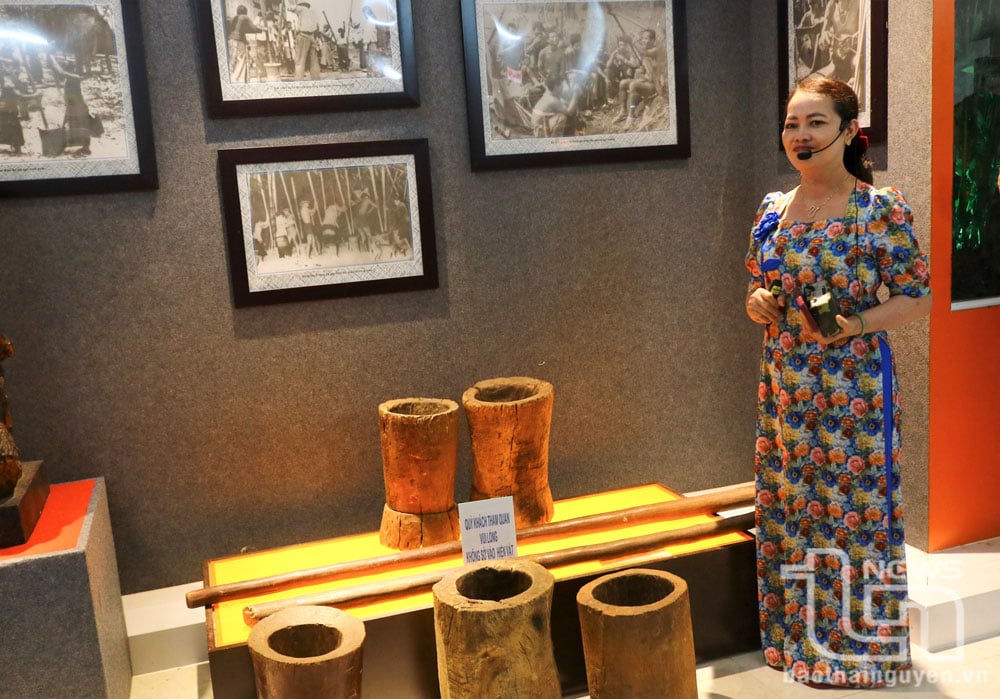 |
| Ms. Hoang Thi Thu Huong, a tour guide at the S'tieng Ethnic Culture Conservation Area - Bom Bo village, introduces visitors to the sounds of pestles and mortars pounding rice by the light of bamboo fires, a tradition of the S'tieng people. |
According to the elder: The material and spiritual life of the S'tieng people is closely intertwined with bamboo. Bamboo is used for building houses, making household items, and tools for production. Bamboo provides vegetables for making soup, sticky rice cooked in bamboo tubes, and some musical instruments such as khom pi, mbuot, dinh jut, and the ceremonial pole used in the spring festival… The elder is proud to have participated as a professional consultant for the restoration and preservation project of the S'tieng Ethnic Culture Conservation Area - Bom Bo village.
The S'tieng Ethnic Culture Conservation Area in Bom Bo village is built on an area of over 113 hectares. Beneath the lush green forest, filled with the sound of cicadas, stands the traditional longhouse of the Bu Lo S'tieng people. Next to it is the largest set of gongs and cymbals in Vietnam, each weighing from 130 to 750 kg. Adjacent to it is a giant set of stone xylophones, each beam weighing from 400 to 600 kg, corresponding to a musical note. Sharing with us, Mr. Pham Anh Tuan, Director of the Culture, Sports and Radio and Television Center of Bu Dang district, said: The locality has 13 gong and cymbal teams, with 70 skilled performers.
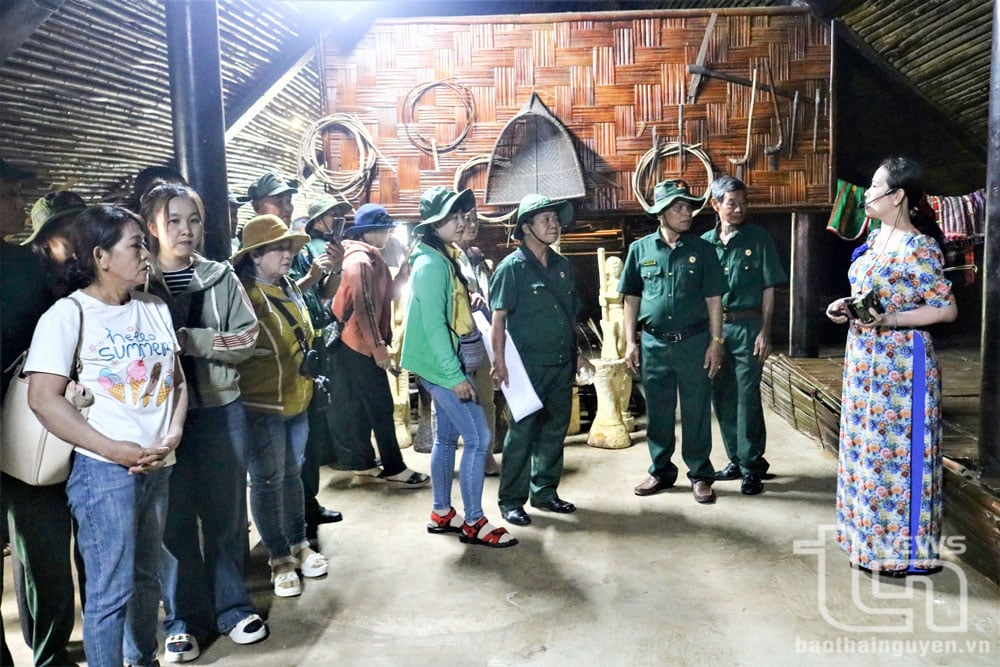 |
| The longhouse complex attracts a large number of domestic and international tourists. |
Beside the giant gongs and stone xylophones of the Central Highlands, I felt the magical sounds imbued with the soul of the forest and mountains. These sounds spoke from the hearts of the S'tieng people, loyal and steadfast, following the Party, actively supporting the army in defeating the American invaders; and together building a land that is becoming more prosperous and thriving day by day. Dieu Coc, a son of Bom Bo village, humorously remarked: "The mortar and pestle of yesteryear still echo with the sound of pounding rice, a melody of resistance filled with pride, resounding alongside the torchlight of the bamboo trees. The gongs, cymbals, the khom pi flute, the bau mbuot mouth organ, and the ding jut lute will forever resonate beside the jars of rice wine—the magical sounds of the mountains and forests."
The bamboo torch is not only a symbol of patriotism, but has become an indispensable part of the spiritual life of the S'tieng people. According to Ms. Thi Xia and Ms. Thi Don: The bamboo torch reminds us to turn our hearts towards our ancestors, to preserve the cultural essence passed down through generations. And the bamboo provides a flickering fire for the children to gather around the village elders to listen to epic tales. Indeed: The bamboo fire allows women and girls to weave cotton threads flawlessly; it allows boys to weave sturdy baskets, and strengthens the love between couples.
Fifty years have passed since the reunification of the country, yet the torch of the bamboo still illuminates the hearts of the S'tieng people with unwavering faith in the Party's guidelines and the State's policies and laws. Today, in Bom Bo village, the rhythmic pounding of pestles encourages the S'tieng people to strive for socio-economic development and actively preserve and promote their unique cultural identity. Through this, they promote the torch of the bamboo and the sound of pestles from Bom Bo village to the world.
Source: https://baothainguyen.vn/que-huong-dat-nuoc/202504/lua-lo-o-thap-sang-bom-bo-9b21267/







![[Photo] Prime Minister Pham Minh Chinh attends the Conference on the Implementation of Tasks for 2026 of the Industry and Trade Sector](/_next/image?url=https%3A%2F%2Fvphoto.vietnam.vn%2Fthumb%2F1200x675%2Fvietnam%2Fresource%2FIMAGE%2F2025%2F12%2F19%2F1766159500458_ndo_br_shared31-jpg.webp&w=3840&q=75)



















































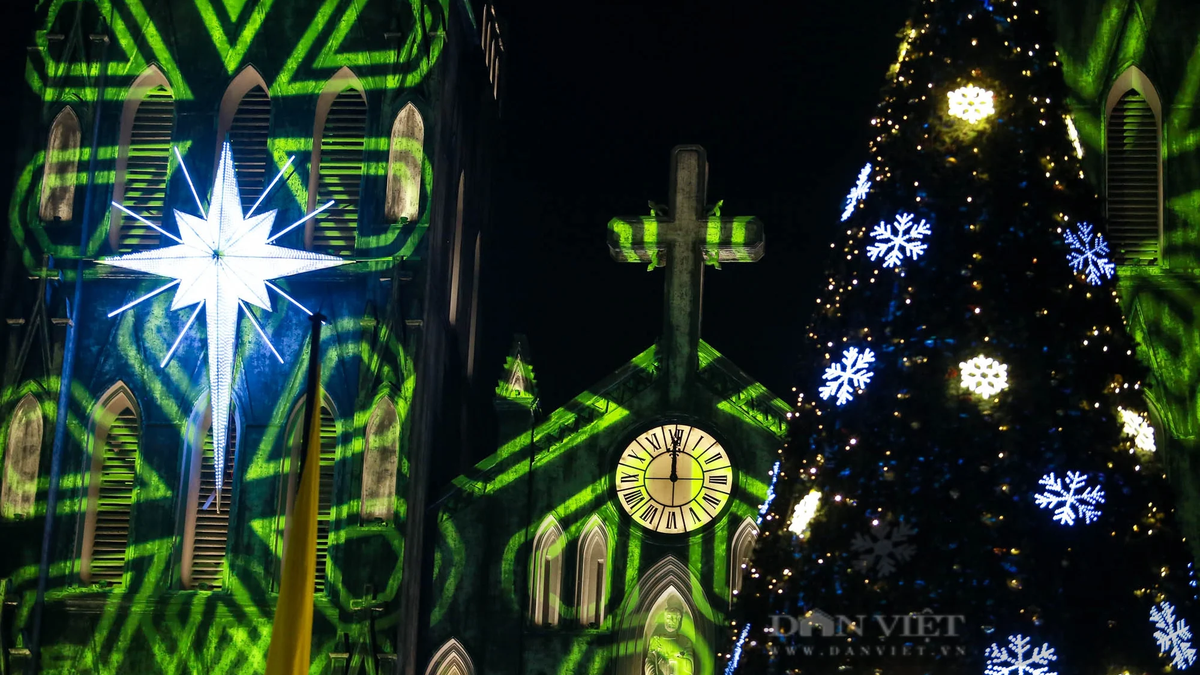








































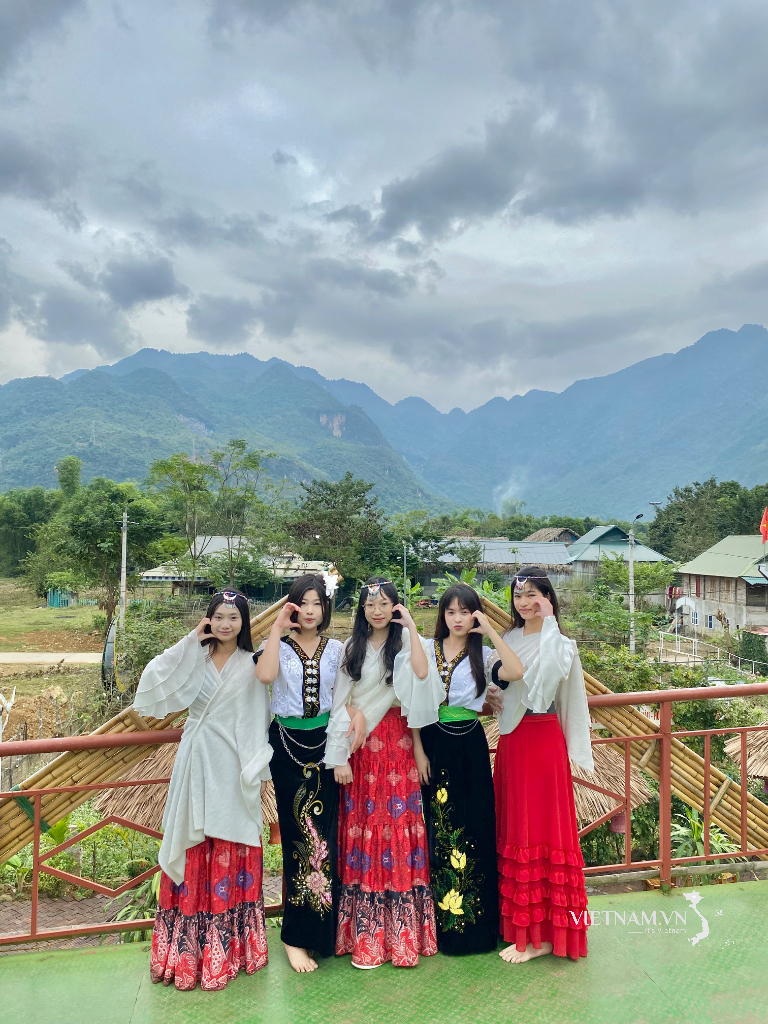
Comment (0)